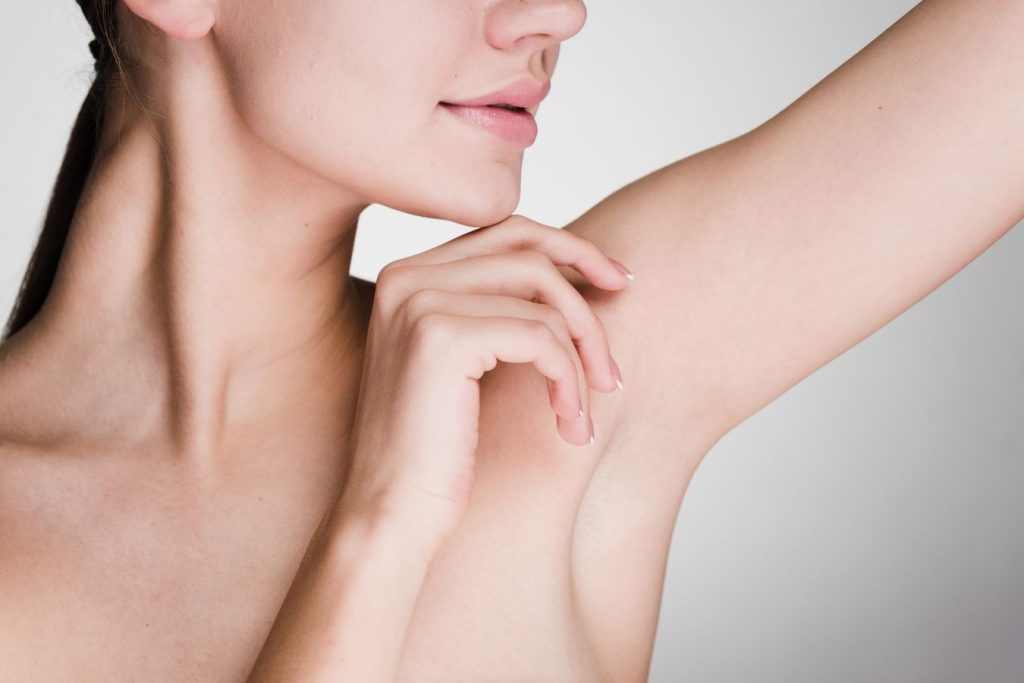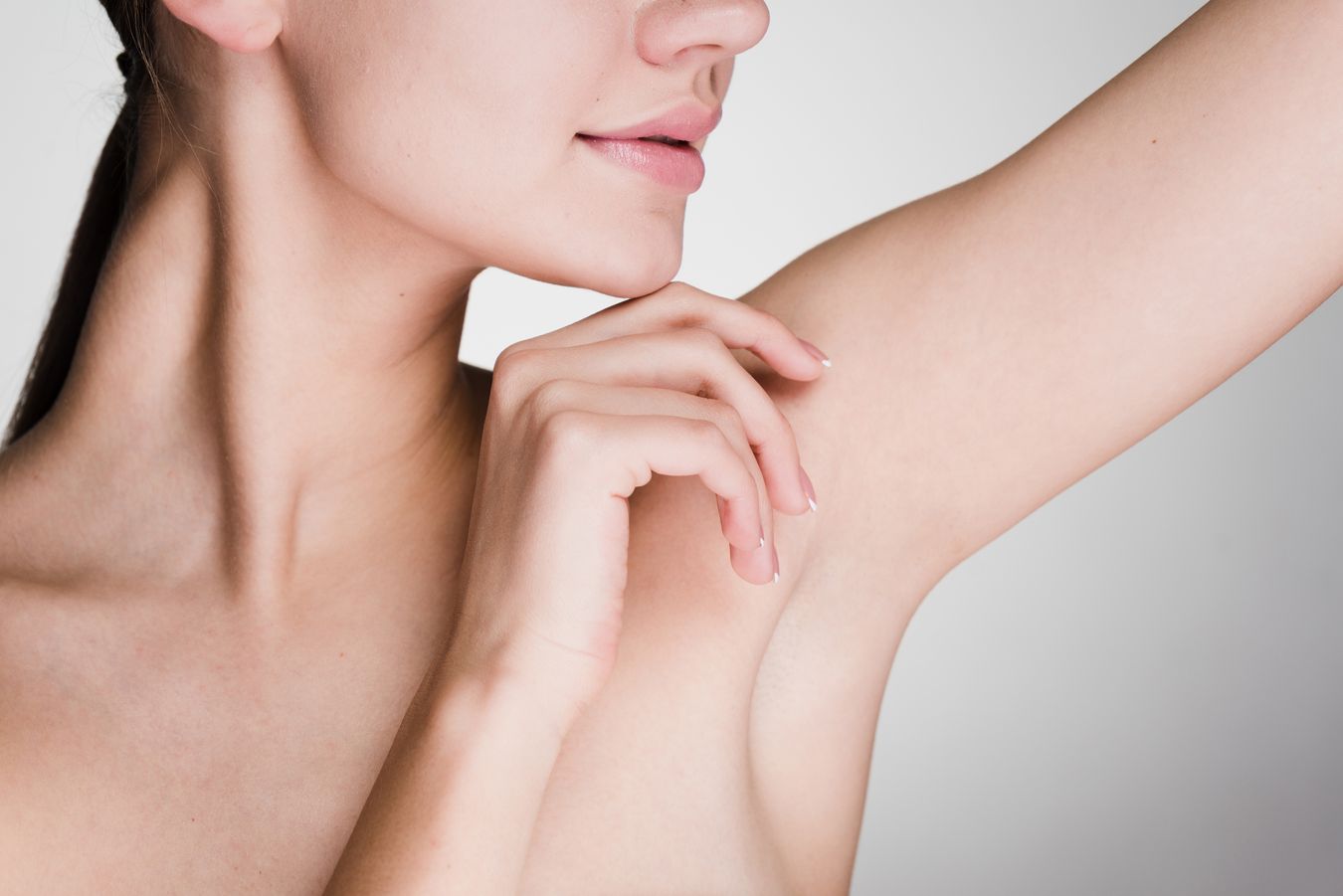Sweaty armpits can be a real bummer, especially when you’re trying to stay cool with an underarm sweating problem and excessive underarm sweating. Hyperhidrosis treatment for armpits offers a game-changing solution. Unlike basic antiperspirants that barely scratch the surface, these treatments target the root cause of primary hyperhidrosis and axillary hyperhidrosis. Imagine confidently raising your arms without worrying about unwanted underarm sweat, wet stains, or foul smells. With advanced options available, dealing with excessive sweat and hyperhidrosis doesn’t have to be a daily struggle. From Botox injections to prescription medications, there’s a method tailored for everyone by a health care provider to address excessive sweat.
Say goodbye to constant embarrassment from excessive sweat and hello to dry, comfortable underarms. Dive into this guide to discover effective hyperhidrosis treatments for excessive sweat that can transform your life, and consult your health care provider.
Understanding Hyperhidrosis
Definition
Hyperhidrosis is a condition characterized by excessive sweating beyond the body’s normal needs for cooling. The sweat glands become overactive, leading to heavy sweating. This can occur even when the person is not hot or exercising.
Affected Areas
Hyperhidrosis primarily affects the armpits, hands, feet, and face. Underarm hyperhidrosis, also known as axillary hyperhidrosis, is common. This condition causes significant social and emotional distress. People may feel embarrassed or anxious about their excessive sweating.
Primary vs. Secondary Hyperhidrosis
There are two types of hyperhidrosis: primary and secondary. Primary hyperhidrosis occurs without any underlying medical condition. It often starts in childhood or adolescence. The cause is unknown but may be linked to genetics.
Secondary hyperhidrosis is caused by another medical condition. Examples include diabetes, thyroid problems, and infections. This type can start at any age and may affect the entire body.
Social Impact
People with severe hyperhidrosis often avoid social situations. They may fear others noticing their sweat stains or shaking their wet hands. This can lead to low self-esteem and isolation.
Emotional Distress
The constant worry about sweating can cause emotional distress. Some people develop anxiety or depression due to their condition. They might spend a lot of time and money trying to manage their symptoms.
Treatment Options
There are several hyperhidrosis treatments available:
-
Antiperspirants: Over-the-counter or prescription-strength.
-
Medications: Oral drugs that reduce sweating.
-
Botox Injections: Blocks the nerves that trigger sweat glands.
-
Surgery: Procedures like hyperhidrosis thoracic sympathectomy.
-
Devices: Microwave therapy or iontophoresis machines.
Community Support
The hyperhidrosis community offers support through various organizations. The International Hyperhidrosis Society provides resources and information. Reading hyperhidrosis articles can help individuals stay informed about new treatments and coping strategies.
Diagnosing Armpit Sweat Issues
Medical History
Doctors first take a detailed medical history. They ask about the duration and frequency of excessive armpit sweating. They also inquire about any family history of hyperhidrosis. Knowing if parents or siblings have similar issues helps determine if it is hereditary.
Physical Examination
A physical examination follows the medical history. The doctor examines the underarms for signs of severe underarm sweating. They look for obvious sweat stains on clothing. Checking the skin for irritation or infection is also important. This step helps to identify any visible symptoms.
Sweat Tests
Sweat tests help pinpoint sweat patterns and severity. One common test is the iodine-starch test. During this test, doctors apply iodine solution to the underarms. After it dries, they sprinkle starch over it. Areas with excessive sweating turn dark blue. This visual cue helps identify uncontrollable underarm sweating.
Lab Tests
Lab tests rule out other conditions that could cause excessive sweating. Blood tests check for thyroid problems or diabetes. These conditions can lead to excess underarm sweating. Urine tests may also be conducted to ensure no underlying issues are present.
Psychological Evaluation
etimes, psychological factors contribute to underarm sweating problems. Stress and anxiety can worsen hyperhidrosis. A psychological evaluation helps determine if mental health plays a role. Addressing these issues can sometimes improve symptoms.
Differential Diagnosis
Doctors perform a differential diagnosis to confirm hyperhidrosis. They consider other causes like infections or hormonal imbalances. By ruling out these conditions, they ensure accurate diagnosis and appropriate underarm sweat treatment.
Imaging Studies
In rare cases, imaging studies like MRI or CT scans are used. These help identify any abnormalities in the sweat glands or surrounding tissues. Such detailed imaging provides a clearer picture of the problem.
Overview of Treatment Options
Medications
Doctors often prescribe medications to manage hyperhidrosis. Anticholinergic drugs are common. These medications block the nerves that trigger sweat glands. Results can vary, and side effects may include dry mouth or blurred vision.
Topical Solutions
Topical solutions are another option. Aluminum chloride is a key ingredient in many antiperspirants. It helps block sweat ducts. Over-the-counter products might work for mild cases. Stronger, prescription-strength options exist for severe symptoms.
Botox Injections
Botox injections are effective for treating armpit hyperhidrosis. Botox blocks the nerves that stimulate sweat glands. The effects last about six months. This treatment needs to be repeated regularly. Specialists usually perform these injections.
Iontophoresis
Iontophoresis uses a device that passes a mild electrical current through water and into the skin’s surface. This method is mostly used for hands and feet but can also treat armpits. Sessions usually last 20-40 minutes and need to be repeated several times a week initially.
Microwave Therapy
Microwave therapy targets sweat glands using energy waves. The procedure involves heating the underarm area to destroy sweat glands permanently. Results are long-lasting, but some discomfort and swelling may occur after the treatment.
Surgical Options
Surgery is considered when other treatments fail. One option is Endoscopic Thoracic Sympathectomy (ETS). This procedure involves cutting the nerves that cause sweating. ETS is generally reserved for severe cases due to potential risks and complications.
Personalized Treatment Plan
A personalized treatment plan is crucial. What works for one person may not work for another. A healthcare provider will assess your specific symptoms and recommend the best course of action. The goal of any treatment is to reduce sweat production to a comfortable level and improve quality of life.
Medication and Topical Solutions
Prescription Antiperspirants
Prescription antiperspirants are common for treating hyperhidrosis. They often contain aluminum chloride, which blocks sweat glands. These products are stronger than over-the-counter options.
Dermatologists usually recommend applying them at night. This allows the product to work while you sleep. Some people may experience skin irritation as a side effect.
Nerve-Blocking Medications
Nerve-blocking medications can help reduce sweating. These drugs interfere with nerve signals that trigger sweat glands. They include glycopyrrolate and oxybutynin.
Doctors prescribe these medications for severe cases. Side effects might include dry mouth, blurred vision, and bladder issues.
Botulinum Toxin Injections
Botulinum toxin injections, commonly known as Botox, are effective in treating armpit hyperhidrosis. Botox injections block nerve signals responsible for sweating. This treatment can last up to six months.
A dermatologist administers the injections directly into the skin of the armpits. Patients often see results within a week. Side effects might include temporary muscle weakness or pain at the injection site.
Antidepressants
Antidepressants can also manage hyperhidrosis. Stress and anxiety can worsen sweating. Medications like SSRIs (selective serotonin reuptake inhibitors) help control these triggers.
These drugs are particularly useful for individuals whose condition is linked to emotional factors. However, they come with potential side effects such as nausea and drowsiness.
Iontophoresis
Iontophoresis is another treatment option. It involves using a device that sends mild electrical currents through water to the skin’s surface. This process reduces sweat production.
Patients typically undergo iontophoresis sessions several times a week initially. Maintenance treatments follow once sweating decreases. Side effects are rare but may include skin irritation.
Surgical and Non-Invasive Procedures
Iontophoresis
Iontophoresis is a non-invasive procedure. It uses water and mild electrical current to block sweat glands temporarily. Patients place their hands or feet in water. Electrodes are then used to deliver a gentle current. This method can be effective for underarm sweating as well.
Patients usually undergo multiple sessions. Each session lasts about 20-30 minutes. The treatment may need to be repeated regularly to maintain results.
Microwave Therapy
Microwave therapy, known as miraDry, is another option. It targets and destroys sweat glands permanently. This method involves two sessions. Each session lasts about an hour.
A device delivers controlled microwave energy. It heats and eliminates the sweat glands in the armpits. Results are often long-lasting and many patients see significant improvement.
Sweat Gland Removal
Surgical removal of sweat glands is another method. A surgeon removes the sweat glands from the underarms. This procedure can provide lasting relief from excessive sweating.
However, surgery carries risks. There may be complications like infection or scarring. Some patients might experience reduced sensation in the treated area.
Sympathectomy
Sympathectomy is a nerve surgery option. It involves cutting or clamping parts of the sympathetic nervous system. This system controls sweating.
The procedure targets nerves that signal sweat production in the underarms. While it can be effective, there are potential side effects. Compensatory sweating is common, where other body parts start sweating more.
Lifestyle Adjustments for Sweat Management
Natural Fabrics
Wearing clothing made of natural fabrics helps manage sweating. Cotton, linen, and bamboo allow the skin to breathe. These materials reduce sweat accumulation by promoting air circulation. Avoid synthetic fabrics like polyester, which trap heat and moisture.
Loose-fitting clothes also help. Tight clothes can increase sweat production. Choose breathable garments that do not cling to the body.
Footwear Choices
Shoes and socks play a role in sweat management. Select shoes made from breathable materials like leather or mesh. These materials allow air to circulate around the feet.
Wear moisture-wicking socks. They keep feet dry by drawing sweat away from the skin. Change socks regularly to avoid excess moisture buildup. This practice reduces the risk of fungal infections.
Regular Antiperspirant Use
Antiperspirants are crucial for controlling sweating. Unlike deodorants, antiperspirants block sweat glands to reduce sweat secretion rates. Apply them on clean, dry skin for maximum effectiveness.
Prescription antiperspirants contain higher concentrations of active ingredients. They are suitable for severe sweating cases. Consult a doctor to find the right product.
Hydration and Diet
Drinking plenty of water helps regulate body temperature. Staying hydrated can reduce overall sweating severity.
Certain foods can trigger sweating. Spicy foods, caffeine, and alcohol are common culprits. Monitor your diet and identify any food-related triggers.

Stress Reduction
Stress increases sweat gland activation. Practice relaxation techniques like deep breathing or meditation to manage stress levels.
Regular exercise also helps control stress. It improves overall health and reduces anxiety, which can decrease sweating episodes.
Daily Hygiene
Maintaining good hygiene is essential for managing sweat. Shower daily with antibacterial soap to remove bacteria that cause odor.
Dry thoroughly after showering, especially in areas prone to excess sweat like armpits and feet. Use talcum powder or cornstarch to keep these areas dry and reduce friction.
Home Remedies and Coping Strategies
Regular Bathing
Bathing regularly helps manage hyperhidrosis. It removes bacteria and reduces odor. Use antibacterial soap for better results. For armpits, focus on thorough cleaning.
Baking Soda
Baking soda acts as a natural antiperspirant. It absorbs moisture and neutralizes odors. Apply it directly to dry armpits. Mix with cornstarch for added effect.
Ice Packs
Ice packs can reduce sweating temporarily. Place them under the arms for a few minutes. This cools the skin and constricts sweat glands.
Lifestyle Changes
Certain lifestyle changes help control sweating. Reducing caffeine intake is crucial. Caffeine stimulates sweat glands, increasing perspiration. Avoid spicy foods as well.
Counseling
Hyperhidrosis can cause emotional distress. Counseling provides support and coping strategies. Talking to a professional helps manage anxiety related to sweating.
Support Groups
Joining support groups connects you with others facing similar issues. Sharing experiences offers comfort and practical advice. Many people find relief in knowing they are not alone.
Clothing Choices
Choose breathable fabrics like cotton. Loose-fitting clothes allow air circulation, reducing sweat accumulation. Dark colors hide sweat stains better than light colors.
Antiperspirants
Over-the-counter antiperspirants contain aluminum chloride. This blocks sweat ducts temporarily. Apply at night for best results.
Preparing for Your Doctor Visit
Document Symptoms
Track your sweating episodes. Note the times and days when sweating is most severe. Record any triggers, such as heat or stress. Describe how hyperhidrosis affects daily activities. This information helps your health care provider understand your condition better.
List Medications
Make a list of all medications you take. Include supplements and vitamins. Some medications can cause excessive sweating. Share this list with your doctor to rule out medication-induced sweating.
Ask Questions
Prepare questions for your appointment. Ask about the diagnosis process. Inquire about possible tests, like blood tests, to check for underlying conditions. Discuss treatment options and their side effects. Understand how treatments affect sweat glands and nerves.
Discuss Impact
Talk about how hyperhidrosis impacts your life. Explain any emotional or social challenges you face. This helps your provider recommend the best care plan.
Review Medical History
Review your medical history before the visit. Note any past conditions that might relate to hyperhidrosis. Inform your doctor about family history of similar conditions.
Final Remarks
Dealing with hyperhidrosis, especially in your armpits, can be challenging. From medications to lifestyle tweaks, there are numerous ways to manage this condition effectively. Each treatment has its pros and cons, so it’s crucial to find what works best for you.
Don’t let excessive sweating control your life. Talk to a healthcare professional about your options and take the first step towards a sweat-free future. Ready to tackle hyperhidrosis? Schedule that doctor visit today and reclaim your confidence!
Frequently Asked Questions
What is hyperhidrosis?
Hyperhidrosis is a condition characterized by excessive sweating. It commonly affects the armpits, hands, feet, and face. This can interfere with daily activities and cause social anxiety.
How is hyperhidrosis diagnosed?
A doctor diagnoses hyperhidrosis through a physical exam and medical history. They may use tests like the starch-iodine test or thermoregulatory sweat test to confirm the condition.
What are the common treatments for armpit hyperhidrosis?
Common treatments include antiperspirants, prescription medications, Botox injections, and surgical options like sympathectomy. Non-invasive procedures like miraDry can also be effective.
Are there effective home remedies for managing armpit sweat?
Yes, home remedies such as using apple cider vinegar, baking soda, and wearing breathable fabrics can help manage armpit sweat. However, these are often less effective than medical treatments.
What should I expect during a doctor visit for hyperhidrosis?
During your visit, the doctor will review your symptoms and medical history. They may conduct physical exams and recommend appropriate treatment options tailored to your needs.
Can lifestyle changes help reduce armpit sweating?
Absolutely. Lifestyle adjustments such as stress management, dietary changes, and wearing moisture-wicking clothing can significantly reduce sweating episodes.
Are there any risks associated with surgical treatments for hyperhidrosis?
Yes, surgical treatments like sympathectomy carry risks such as compensatory sweating, infection, and nerve damage. Always discuss potential risks with your doctor before proceeding with surgery.





